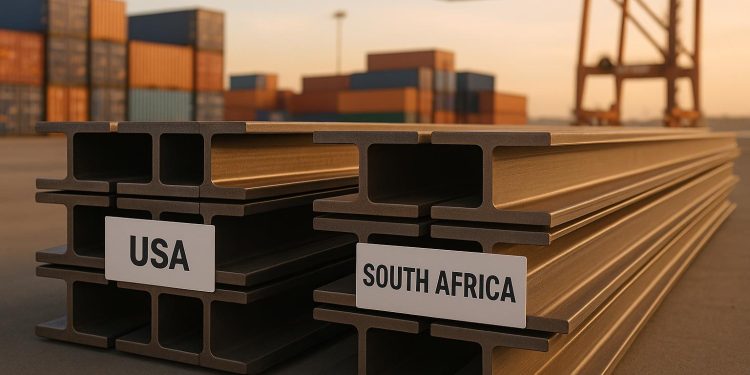The United States is moving forward with plans to levy new tariffs on corrosion-resistant steel imports from South Africa and nine additional countries. This decision follows an investigation by the U.S. Commerce Department, which uncovered evidence of unfair pricing practices and government subsidies within these nations’ steel industries.
Commerce Department Investigations and Findings
The U.S. Commerce Department has determined that imports of corrosion-resistant steel from ten trading partners, including South Africa, were being "dumped and/or subsidized." These imports, valued at $2.9 billion (R51.1 billion), originate from Australia, Brazil, Canada, Mexico, the Netherlands, South Africa, Taiwan, Turkey, the United Arab Emirates, and Vietnam.
Corrosion-resistant steel plays a crucial role in several industries, such as automotive manufacturing, home appliances, and construction. According to U.S. Under Secretary of Commerce for International Trade William Kimmitt, American companies and workers "deserve to compete on a level playing field."
The proposed tariffs, known as anti-dumping and countervailing duties, aim to shield U.S. steelmakers from foreign competitors accused of offering products below market prices or benefitting from unfair subsidies. However, these additional measures are not yet final. The International Trade Commission (ITC) will make its determination on whether these imports have caused injury to the U.S. steel industry. Should the ITC issue an affirmative ruling, the new tariffs will be implemented.
Economic Tensions with South Africa
The potential tariffs are the latest development in a string of trade disputes between the United States and South Africa. Relations between the two nations have become increasingly strained due to trade policies and broader geopolitical issues.
Earlier this year, South Africa faced a sweeping 30% tariff on its exports to the U.S., one of the highest rates imposed on any Sub-Saharan African nation. This measure targeted a range of goods, including steel, aluminum, automotive components, and industrial products. The tariffs have placed South Africa’s export-driven economy under significant pressure and raised concerns over its continued duty-free access under the African Growth and Opportunity Act (AGOA).
In response to these challenges, South Africa is exploring strategies to reduce its reliance on U.S. markets. These efforts include strengthening trade ties within Africa and expanding export opportunities in Asia and Europe.
Next Steps in the Tariff Process
The U.S. Commerce Department underscored that, "If the ITC makes an affirmative, trading partner-specific injury determination, Commerce will issue anti-dumping and countervailing orders." For now, the ITC’s final decision will play a pivotal role in determining whether the proposed tariffs come into effect and reshape trade dynamics for the affected nations.
The proposed measures reflect the broader protectionist agenda pursued by the U.S., aiming to bolster domestic industries but placing increased strain on international trade relationships. For South Africa and the other impacted nations, these developments highlight the growing challenges tied to navigating global trade policies.





